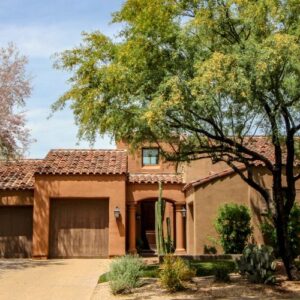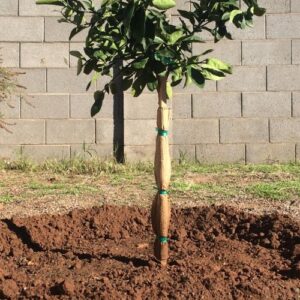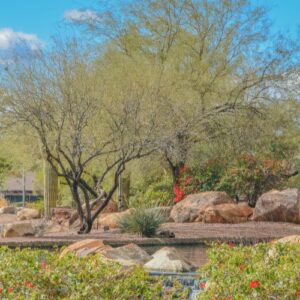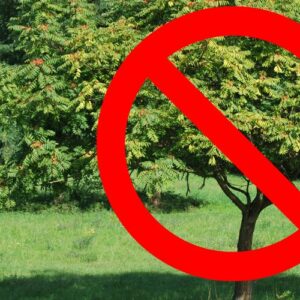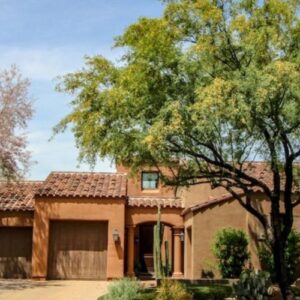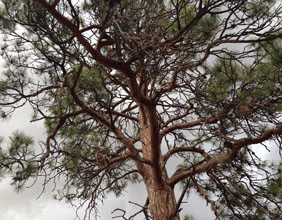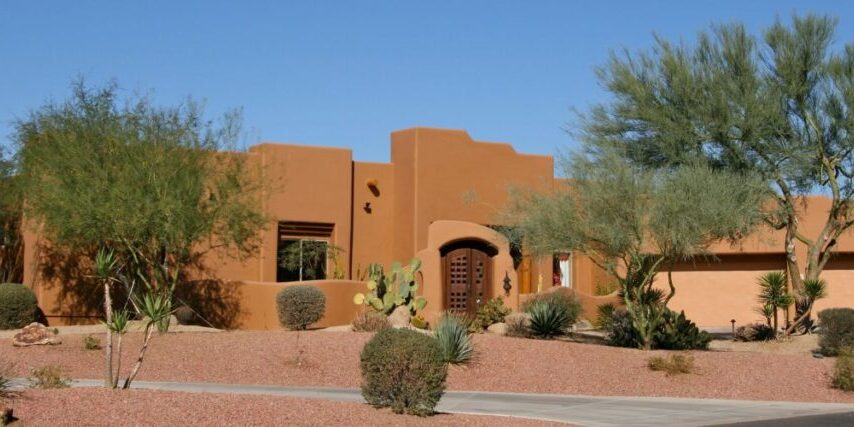
Non-native trees can be some of the best trees for Phoenix and the surrounding areas. But if you live in or own property here, you know that there are restrictions on what non-native trees and plants you can plant on most Phoenix area properties.
Fortunately, eight of these trees have recently approved for planting in the region.
What is a Non-Native Tree?
Simply put, "non-native," or "non-indigenous," tree species are trees living in areas where they don't naturally exist. These trees are often introduced intentionally with little foresight.
As a result, you often hear about the negatives associate with these trees such as outcompeting native trees and unwanted spread.
But not all non-native trees are harmful if proper precautions are followed. In fact, some of these exotics are the best trees to grow in Phoenix.
Recently, some new non-native trees have recently been added to the approved list in the Phoenix, Arizona area. And though these additions don't naturally grow in the region, they can thrive with a little extra care.
Read on as we introduce some of these exotics that are among the best trees for Phoenix and the surrounding area. See for yourself how these non-indigenous trees are a great addition to your property!
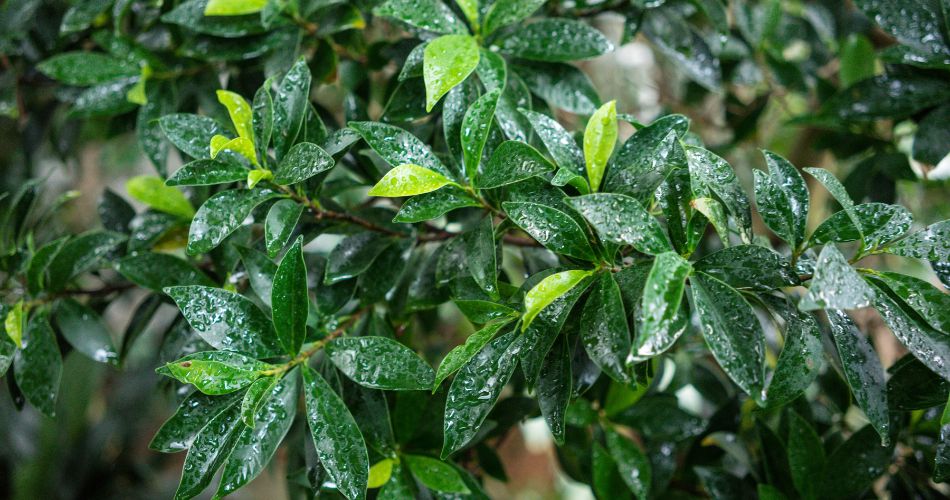
Indian Laurel or Laurel Fig Tree (Ficus nitida or Ficus microcarpa)
Extremely popular as a shade tree in the Phoenix area, the non-native tree Ficus nitida is an evergreen tree that, once established, can handle our desert heat and sun.
The tree has a dense canopy of leaves that provides much-needed shade, but it is also sometimes grown as a hedge for privacy or to muffle sounds (like from a busy nearby street) which makes it one of the best trees for Phoenix.
Additionally, the tree canopy is also a favorite resting spot for many types of birds.
Ficus nitida trees are fast-growing and prefer full sun. They can grow quite large and often have several surface roots, so keep this in mind when choosing a tree for your property.
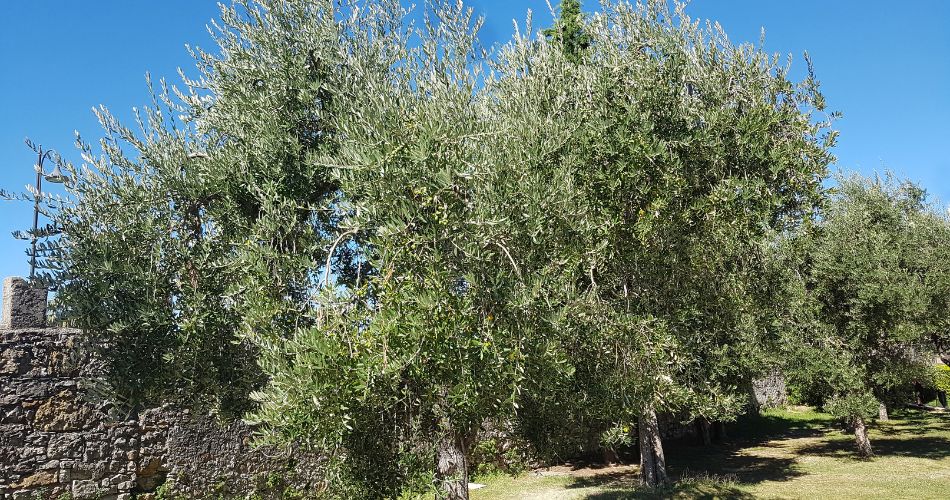
Fruitless Olive Tree (Olea europaea)
The evergreen fruitless olive tree is a non-native tree known for its gray-green foliage, slow growth rate, and low water needs. Native to Greece, Italy, and other parts of the Mediterranean, they thrive in our desert heat.
But this is only one characteristic that makes them one of the best trees for Phoenix.
Note that only fruitless and pollenless varieties of olive trees can legally be purchased, due to the allergenic qualities of olive trees.
Olive trees grow around 43 to 50 feet tall and wide, prefer full or partial sun, and are cold-tolerant down to 15 degrees Fahrenheit. This makes the fruitless olive one of the best trees for Phoenix.
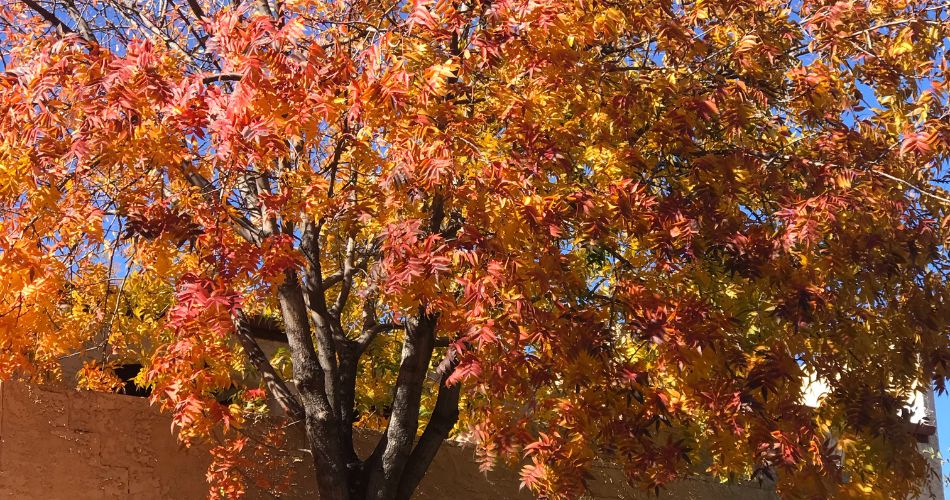
Red Push Pistache (Pistacia atlantica x integerrima 'Red Push')
Another example of the best trees for Phoenix is the red push pistache. These trees get attention for their leaves, which appear red at first growth, and then gradually change to dark green. In the late fall, the leaves change to burnt orange.
They are considered large shade trees, so will need a large yard with plenty of room for this non-native tree and the tree's roots. They can grow 25 to 40 feet tall and 20 to 30 feet wide.
Red push pistache trees have a moderate growth rate and can be long-lived if they receive adequate water, nutrients, maintenance, and care.
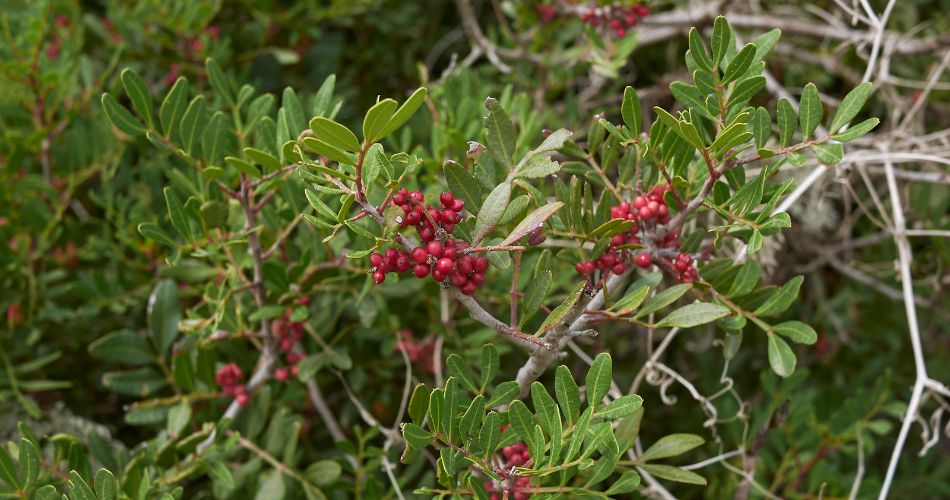
Mastic Tree (Pistacia lentiscus)
Also known as evergreen pistache, mastic trees are native to the Mediterranean and, once established, can be very drought tolerant which makes them one of the best trees for Phoenix.
Also, they hold on to their foliage year-round, which makes them great as living fences or sound barriers.
It also means that they produce almost no litter, making them a good option near swimming pools, just a few of the reasons they are among the best trees for Phoenix and the surrounding areas.
They do produce small red fruits that ripen to black and have very flexible branches. Mastic trees do best in full sun and prefer soil that is well-drained and that doesn’t contain caliche.
A slow-growing medium-sized tree, mastics can be grown as shrubs, hedges, or trees. They grow from 12 to 25 tall and 15 to 25 feet wide.
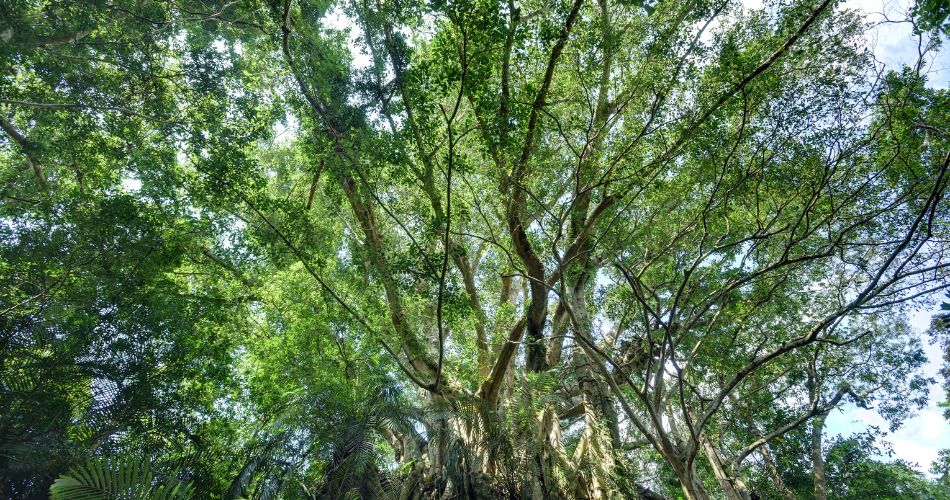
Weeping Fig (Ficus benjamina)
Native to India and Malaysia the weeping fig tree is a non-native tree known by many names, including “weeping Chinese banyan” and “Java laurel” is another of the best trees for the Phoenix area.
It can grow 30 to 50 feet tall and just as wide and does well in full sun to full shade. It has a dense canopy of dark green leaves, which provide excellent shade but may prevent anything from growing underneath the tree.
Weeping fig trees have small orange to yellow fruit and small flowers. Plant weeping fig trees where they are protected from the hot summer sun (no western exposures) and ideally, near a building or wall (east or north exposure) to prevent freezing.
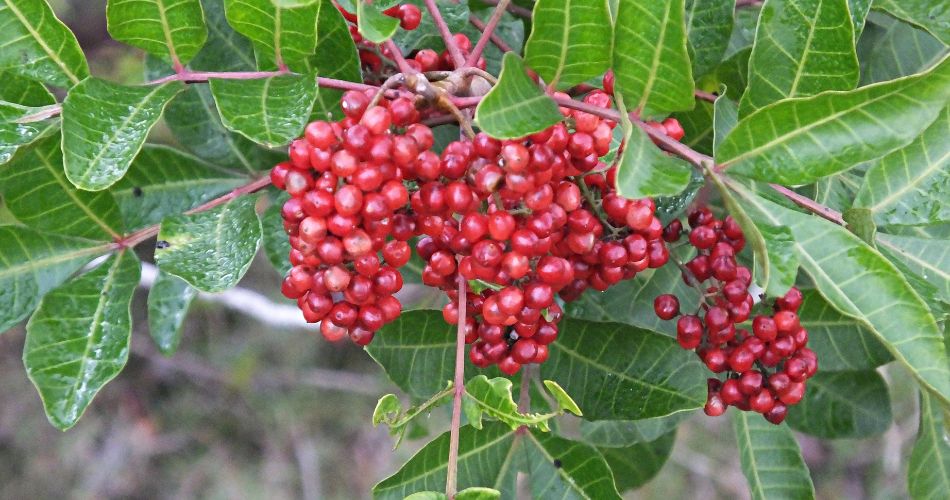
Brazilian Pepper Tree (Schinus terebinthifolius)
The Brazilian pepper tree is often referred to as the Christmas berry tree due to its bright red fruits that appear in the fall and winter.
Growing 20 to 30 feet tall and often wider than 30 feet, this evergreen tree is known for not only the red fruits but also its aromatic leaves. It does best in full sun and well-drained soil, making it one of the best trees for Phoenix due to the dry climate.
Brazilian pepper trees have a wayward branch structure so they benefit from frequent professional pruning.
Note that the Brazilian pepper tree has become invasive in some states including Hawaii, Florida, and California due to its propensity to produce seedlings that can eventually form a thicket.
These thickets push out native plants, can be hard to control, and prevent anything else from growing. Keep this in mind before adding it to your property.
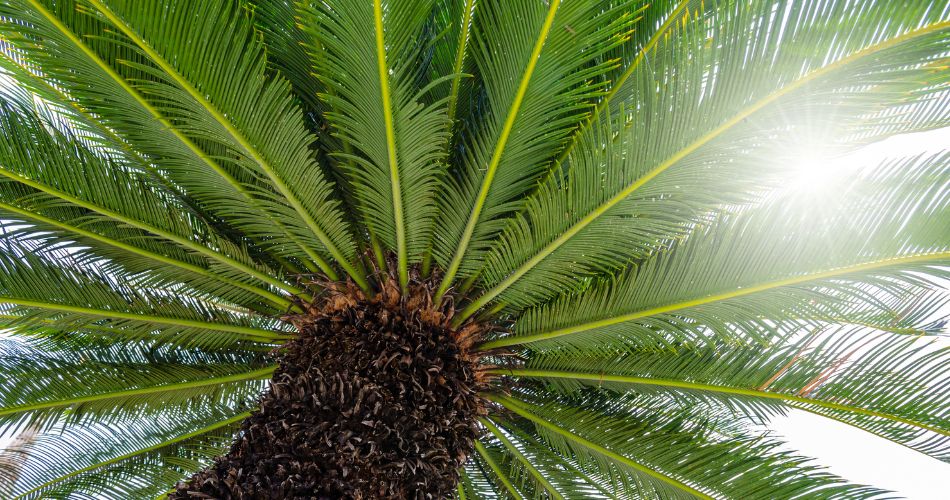
Sago Palm (Cycas revoluta)
Though called a palm, sago palms are cycads, a type of tropical plant that produces nuts but not flowers (or fruit). In fact, sago palms are gymnosperms, so they are more closely related to conifer trees than palms! Growing up to 10 feet tall, sago palms do best in partial shade.
Sago palms are native to Japan and China, and are very slow-growing, so are often grown as houseplants. Too much direct sunlight can harm the large fronds. Sago palm roots can get root rot if the soil doesn’t drain well, but this tree also needs plenty of humidity.
They can also suffer frost damage if temperatures drop too low. In fact, if temperatures drop to 23 degrees Fahrenheit, it can kill sago palms.
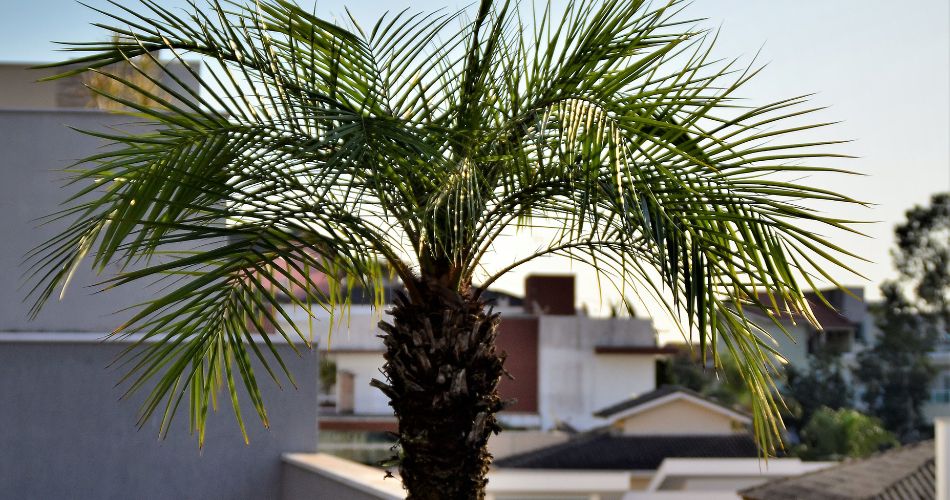
Pygmy Date Palm (Phoenix roebelenii)
Even though the word “Phoenix” is part of the pygmy date palm’s scientific name, it is native to Laos, China, and Vietnam, not the Phoenix area. However, that doesn’t mean that it won’t thrive here.
This dwarf palm will grow just 6 to 10 feet tall, with a spread of 6 to 8 feet. It usually grows with one stem but may become multi-stemmed.
Just as with the sago palm, pygmy date palms have delicate fronds that may become burned in direct sunlight. Nevertheless, they can be planted in full sun or part shade.
Pygmy date palms do well when planted in containers or in the ground and prefer moist but well-drained soil, another reason they are among the best trees for Phoenix and the surrounding dry areas.
Care for Your Non-Native Trees
Most of the newly allowed trees are not native to the area so will need some extra help to thrive in our climate, but they remain some of the best trees for Phoenix and the surrounding area.
Luckily, Titan Tree has several fertilization, soil amendment, and plant health care options to help all of your non-native trees thrive.
Contact Titan Tree if you’d like to add any of these newly approved trees to your property or if you’d like to learn more about fertilization or soil amendment services for any of your trees.
See Our Latest Articles
More Articles Like This

Titan Tree Care is a full-service tree care company located in Anthem, AZ and serving all of North Phoenix. We offer a wide range of services to meet your tree care needs, including tree and palm trimming, tree pruning, tree removal, stump grinding, and more. We also offer insect or disease treatments and fertilization services. We are dedicated to providing high-quality, safe, and effective tree care services to our customers and work hard to ensure that your trees are healthy and look their best.



